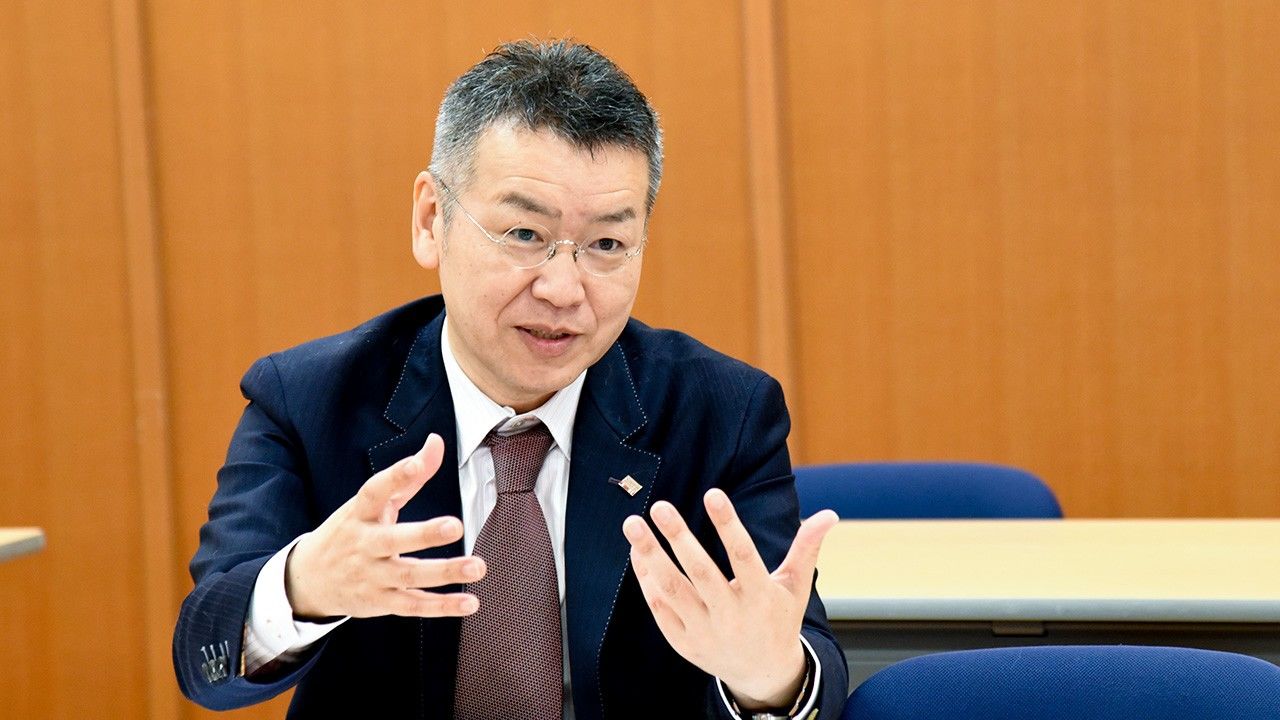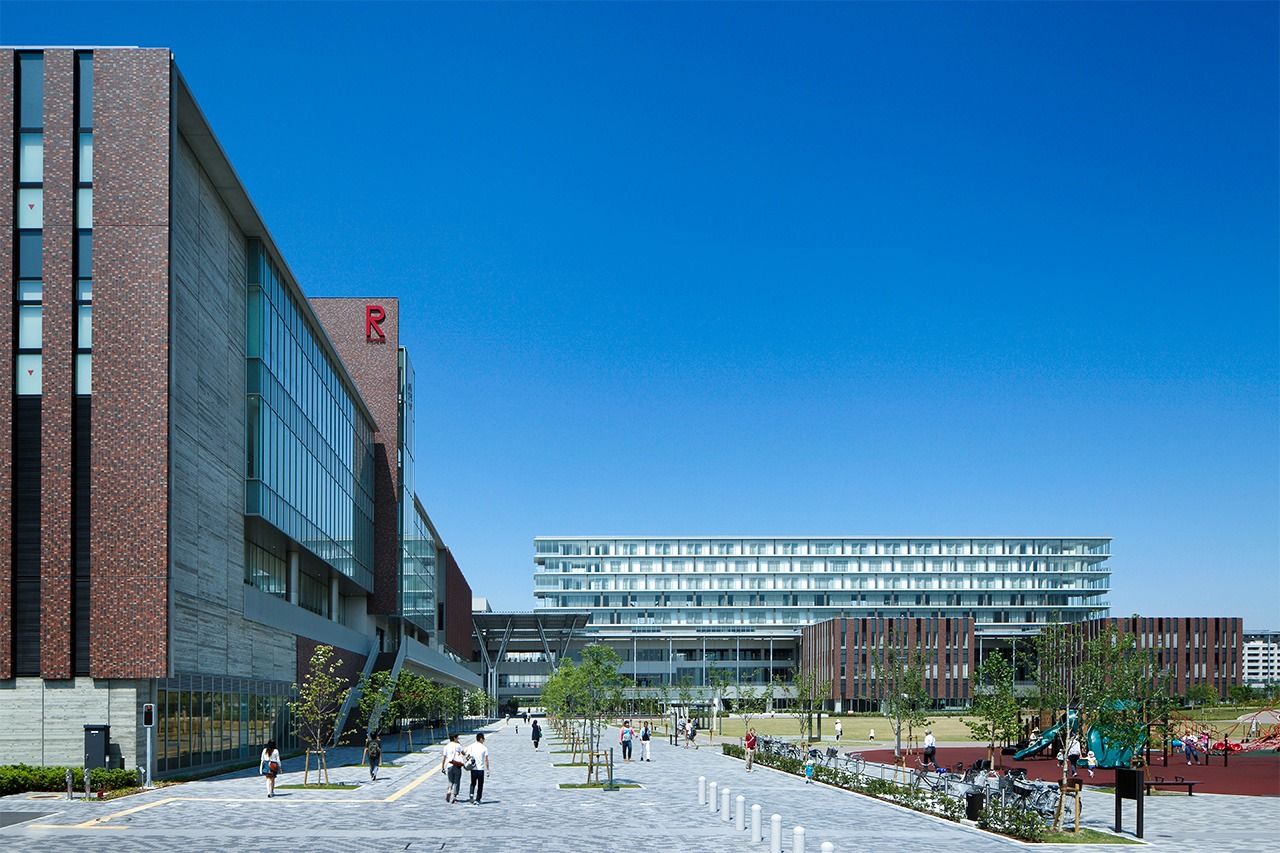
Taking the Liberal Arts to the Next Level in Japan
Education Society- English
- 日本語
- 简体字
- 繁體字
- Français
- Español
- العربية
- Русский
What Does It Mean to Be Truly Educated?
INTERVIEWER Japan is in the midst of a boom of sorts in books and TV programs seeking to “educate” media consumers in fields like history and philosophy. The business world, too, is seeing brisk sales of titles on things like art history, with readers urged to make themselves into “informed, cosmopolitan people who can speak confidently about art.” In the past, Japanese university education included a general education component exposing students to a broad selection of topics before they moved on to focus on their majors. Does this differ from the trend we’re seeing today, where universities are increasingly focusing on the liberal arts as a core component of a well-rounded education?
KANAYAMA TSUTOMU For the roots of the liberal arts, you have to go back to the times of ancient Greece and Rome. The liberalia studia, the “studies worthy of a free person,” encompassed seven pursuits: grammar, logic, rhetoric, arithmetic, geometry, astronomy, and music. These fields of study were stressed as the way to liberate one’s spirit—not just to gain knowledge, but to foster creativity, buttressing it with practical skills to make one’s way in the world. In short, this education sought not to impart facts, but to create flexible intelligence that would make the learner’s life richer.
In the societies of the West, the liberal arts now stand as an academic framework in their own right. Britain in particular retains a rich tradition of this traditional approach to liberal arts education, with the universities of Oxford and Cambridge standing at its forefront. In the United States, too, schools like Harvard and Yale offer deep programs in the liberal arts. Building on the foundation of these programs, students go on to graduate studies in fields like medicine and the law. Programs like these are the reason that graduates can go on to put truly broad perspectives to work in various parts of society.
There are some programs in Japan that place the liberal arts at the center. I might name the University of Tokyo’s College of Arts and Sciences, International Christian University, Waseda University’s School of International Liberal Studies, Sophia University’s Faculty of Liberal Arts, and Akita International University. Graduates of these programs have gone on to win high praise for their work in society, which may be one reason that we’re seeing what might be called a liberal arts boom, with many more universities launching their own schools and departments these days. Even the Tokyo Institute of Technology, renowned as a center for scientific learning, launched its own Institute for Liberal Arts in 2016. We’ve entered an era when university education is striving at a higher level to meet the actual needs of society today.
Graduates Ready for the Global Stage
INTERVIEWER Sapiens: A Brief History of Humankind, the 2015 work by Yuval Noah Harari, was a bestseller in markets around the world. His commanding overview of the full scope of the history of humankind, informed by the humanities and social sciences in addition to natural science, was a fresh approach that captivated many readers. Are there connections between what he accomplished and the liberal arts approach to learning?
KANAYAMA There are indeed. Today society needs its universities to do just this—to foster academic wisdom that spans all of the human, social, and natural sciences. The sort of knowledge or knowhow that’s immediately applicable tends to be the sort that goes stale right away. People must learn things outside of their traditionally demarcated narrow fields and gain the insight that will help them craft the foundational knowledge they will need to live in a new era.
At Ritsumeikan University, we’re launching our College of Global Liberal Arts in April this year. The curriculum is built around three main pillars: cosmopolitan studies, which address the “horizontal axis” of area studies in a global context; civilization studies, following the “vertical axis” of history to explore the paths humankind has taken; and innovation studies, a timely approach to the reforms and transformations that contemporary society is undergoing today. Through this curriculum we’re attempting to produce graduates who meet the needs of globally active companies in Japan and elsewhere around the world.

Ritsumeikan’s Osaka Ibaraki Campus will house the new college starting this year. (Courtesy Ritsumeikan University)
International Ties at the Heart of the Program
INTERVIEWER What challenges do you foresee in taking Japan’s liberal arts learning to the next level?
KANAYAMA The first step is to change the way that society in general views the liberal arts. I hope to bid farewell to the idea that the liberal arts are a form of “general education” to provide to new students before they move on to “higher” fields of study like the law, economics, business management, or literature.
If they are to be successful on the global stage, business leaders have to hone a perspective that goes beyond themselves and their own organizations. They need to develop their own ethical sense and be observant of broader societal trends. An ability to observe individual phenomena and contextualize them in a coherent, systematic way allows people to foresee how their decisions are likely to impact those trends. We need to foster people ready to observe the world around them with a critical eye and to respond flexibly to diverse, pluralistic cultures and values.
Toward this end, in the field of liberal arts we have to tie up with top-class universities overseas. Our new college will work closely with the Australian National University’s College of Asia and the Pacific in designing and rolling out its liberal arts program. We hope this relationship will breathe fresh air and innovation into this field of education in Japan.
Making Room for Global Standards
INTERVIEWER Your aim is to provide liberal arts education appropriate to the global era, and to connect it closely to real-world needs and practices. And you’re gathering a diverse student body from all around the world. Doesn’t all this mean that you need to make drastic changes to the entrance examination and other systems in place in Japanese universities?
KANAYAMA Let me talk about exactly what we’re doing in the College of Global Liberal Arts. The whole project hinges on our gathering eager students from around the world, not just from inside Japan. Four years of learning will provide countless settings, including in the dormitories on campus, where the students can spend time and exchange opinions with their counterparts, who come from all over and have all kinds of backgrounds to share. This will provide a solid foundation for them once they graduate and move out into the wider world.
The standard Japanese academic year, beginning in April, is a considerable obstacle to our achievement of these goals. If we truly want to enrich the educational content of our new college, we can’t stick with an entrance exam schedule that lets people matriculate only in April. We need to adopt international standards for the entrance examinations as well. We’ve decided to allow students to begin their studies either in April or in September, and we’ve gone all-in on a new testing scheme that will let us welcome more ambitious students from around the world. Students hoping to matriculate in September this year have until early March to apply to take the entrance exam.
INTERVIEWER So we’re coming to an era when we look to Japanese liberal arts to produce diverse global talent that can help to change the world? I hope your school can make some dynamic moves in this area, given Japan’s key position in the Asia-Pacific region.
KANAYAMA All of us involved in liberal arts education in Japan intend to do our very best to achieve just that.
(Originally written in Japanese. Banner photo: Professor Kanayama Tsutomu, dean of the Ritsumeikan University College of Global Liberal Arts.)